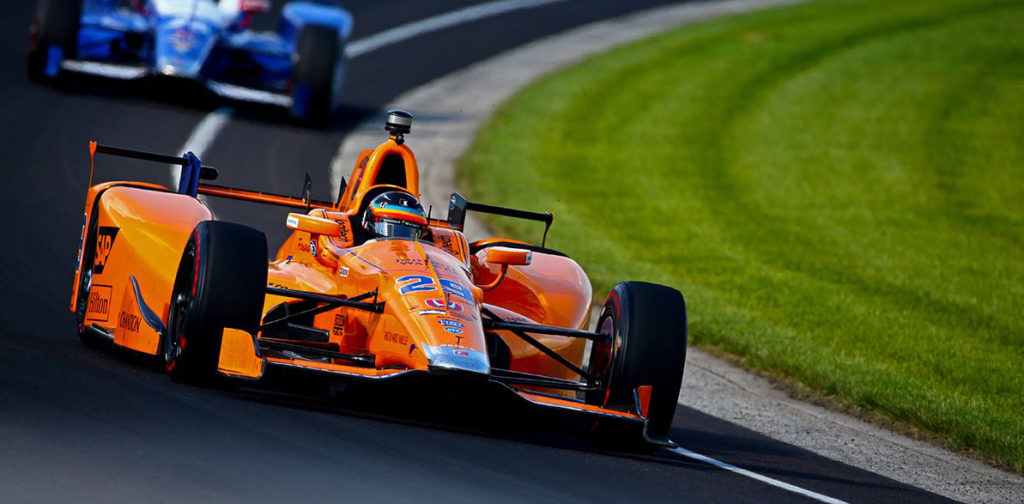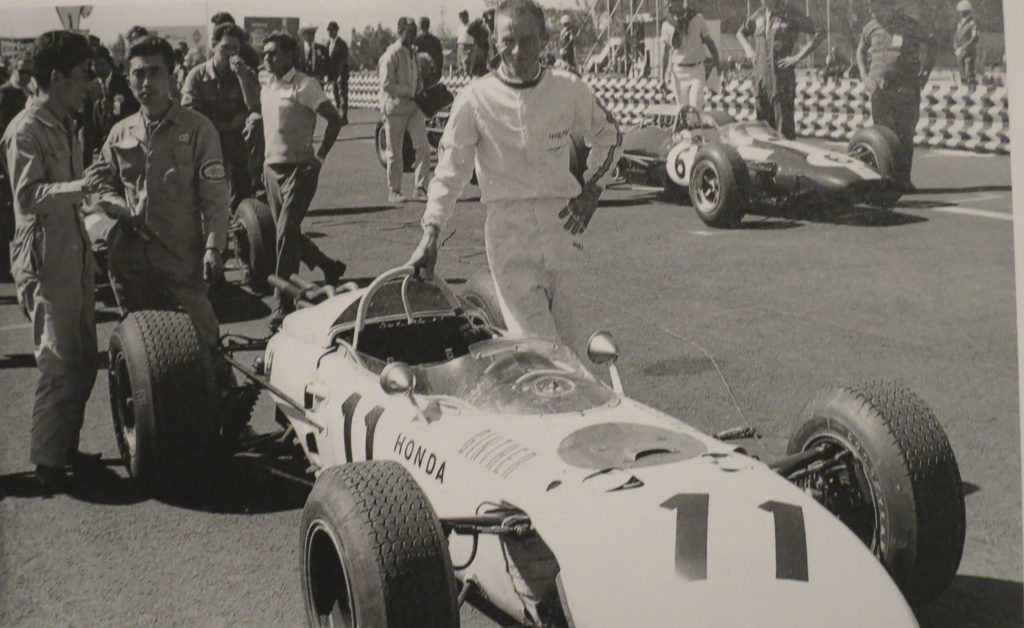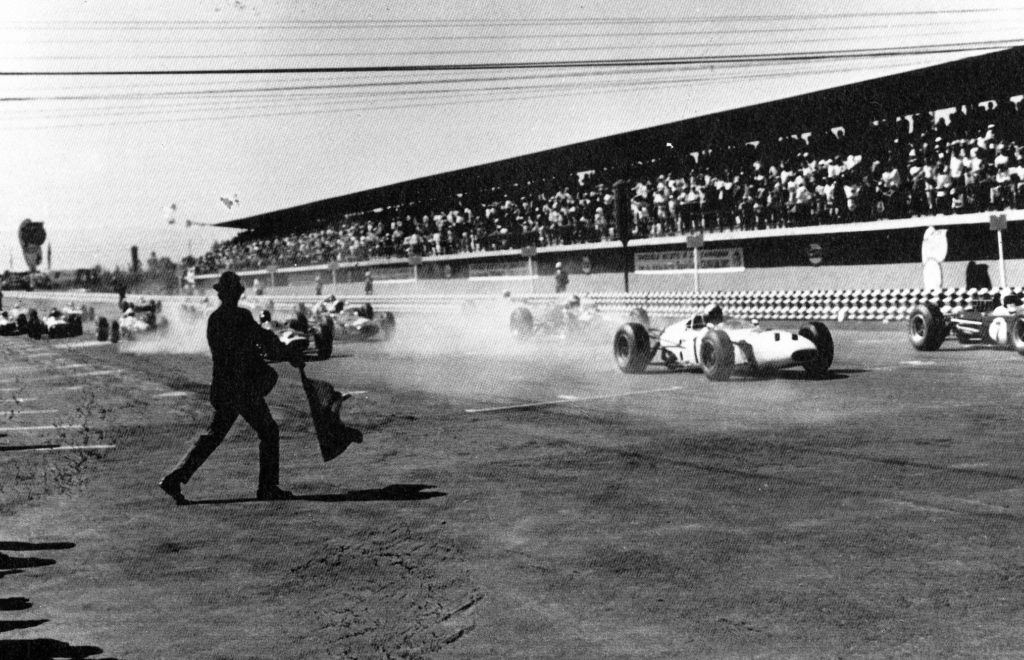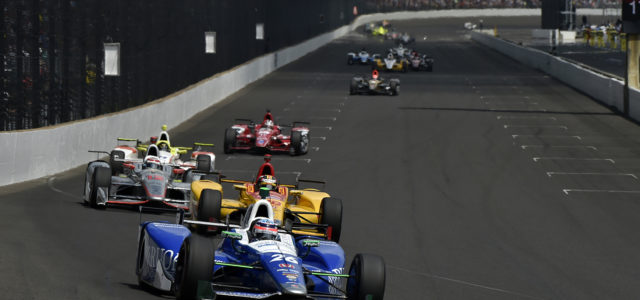
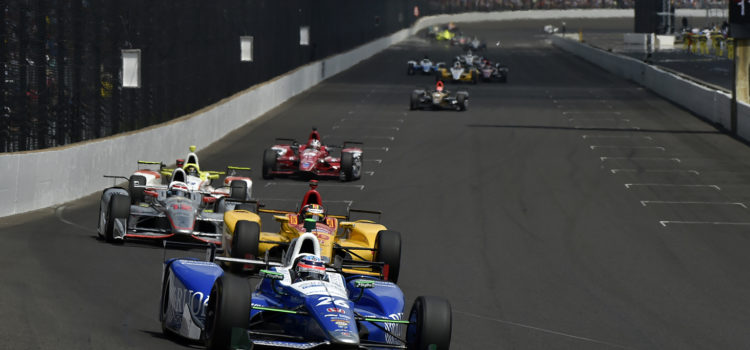

Some would say that Honda, in the month of May, experienced both the agony and ecstasy. In the world of motor sport, Honda continued to underwhelm as the engine supplier to McLaren in F1 but then, on Sunday, May 28 came the stunning Takuma Sato result at the Indy 500, Taku becoming the first ever Japanese driver to win America’s ‘Greatest Spectacle in Motor Sport’ and in a Honda-powered Indycar.
Kapow. It was an incredible last gasp victory, thoroughly deserved, for the ever likeable Taku, one that will be celebrated in his homeland for a long time to come. To win the Indy 500 is something really special, requiring skill, bravery and luck and much more besides.
For the watching world, however, another story was that Fernando Alonso (also Honda powered) retired from the race on lap 179, the double world champion putting in a meteoric shift at the Brickyard in his debut year and closing in on possible victory…until his Honda Indycar engine gave away…
Precisely the moment Alonso pulled off the track, social media lit up and another array of 140 character commentary was rather less than kind to the house of Honda, let’s say.
Indy is notoriously tough on engines, and failures do happen, so let’s just say Alonso was unlucky this time (just as the reliability cards happened to fall Sato’s way on this occasion).
But in the wider picture, and in particular relation to F1, Honda has been a serial under achiever of late and frankly, this has been painful to watch.
Honda is a world class company with a fantastic racing history but something has gone seriously amiss in the current 1.6 turbo hybrid formula and as we come to the mid way point of the 2017 season, (Honda’s second since its return), Honda is still at the wrong end of the grid, fighting power and reliability issues. The hope is that Honda can yet turn it around.
Thirty years ago, it was all so different. Honda then was the master of F1, with the best, most powerful and successful engines. In the Senna/Prost McLaren era, Honda was nigh on unbeatable, producing one world beating F1 engine after another. Its image was sky high.
Today’s 1.6 turbo hybrid technology is something very different, for sure, but then the Honda Motor Co., itself also seems to have a different attitude. In the ‘80s, with leaders like Mr. Nobuhiko Kawamoto at the helm, Honda was a driven force with a formidable ‘whatever it takes’ attitude. Six F1 manufacturer titles in a row showed who was boss…
Today, the word from Tokyo is that Honda sees it as something of ‘a duty’ to be in F1. The positives are training engineers and being at the forefront of technology.
But is that enough? The works engine programme led by Mr Yusuke Hasegawa is currently doing Honda (and F1) absolutely no favours. (McLaren may also be complicit).
It could yet cover but present the returns are negative and it begs the question of how long the Honda board will persist with this losing strategy. Knowing Honda’s capability, it could – and should – be so different… Honda needs to be at the front of the grid.
Yes, F1 is also about people and there’s a telling story about Honda’s first ever victory, at the season ending 1965 Mexican GP.
For this finale, team manager Yoshio Nakamura was allowed to re-organise the team as he saw fit. As author Testuo Sakiya recounted in his defining book, ‘Honda Motor,’ Nakamura reshuffled the team ‘in complete disregard to the intra-company seniority system….adopting a rigid policy of the “right man in the right position.”
That might sound quaint in today’s terms, but it worked.
Ritchie Ginther led the race from start to finish in his Honda RA 272.


